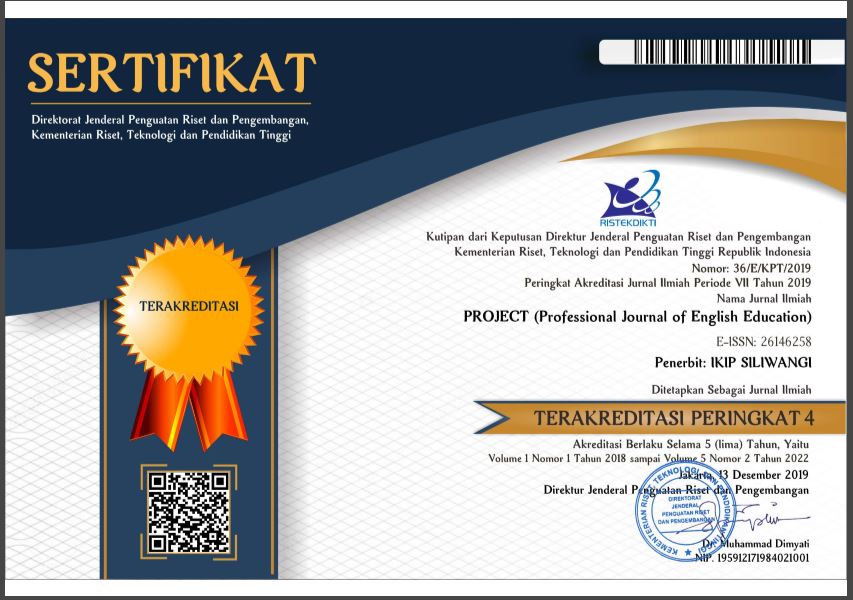Verbal and Non-Verbal Intercultural Communication Challenges and Strategies
Abstract
This study examines the verbal and non-verbal intercultural communication challenges faced by R, an Indonesian exchange student at UC Davis, and explores the strategies he used to overcome them. Employing a narrative inquiry methodology, the research focuses on R’s lived experiences and investigates how these strategies fostered his intercultural communication competence. The findings reveal that R encountered difficulties related to language diversity, differing communication styles, evolving English language usage, and non-verbal cues such as cultural norms and contextual differences. To address these challenges, he utilized strategies including maintaining language fluency, employing visual aids, and adopting alternative communication methods. These approaches enabled him to navigate communication barriers effectively while fostering cultural adaptability and a deeper understanding of cross-cultural nuances. R’s experiences highlight the significance of adaptive strategies in managing personal space, maintaining mindfulness, and engaging actively in intercultural interactions. The study underscores the importance of these skills in enhancing practical communication abilities and navigating the complexities of intercultural environments. These insights contribute to a broader understanding of how exchange students develop competence in diverse cultural settings, providing valuable implications for educators and program coordinators in supporting intercultural learning.
References
Arasaratnam-Smith, L. A., & Deardorff, D. K. (2023). Developing Intercultural Competence in Higher Education; International Students’ Stories and Self-Reflection. Third Avenue, New York: Routledge.
Barker, G. G. (2016). Cross-Cultural Perspectives on Intercultural Communication Competence. Journal of Intercultural Communication Research, 45(1), 13–30. https://doi.org/10.1080/17475759.2015.1104376
Brinkmann, S., & Kvale, S. (2018). Doing Interviews (Second, Vol. 5; U. Flick, ed.). 55 City Road, London EC1Y SP: SAGE Publications Ltd.
Budiman, Jaswadi Ishaka Putra, Rohani, L. M., Halilurrahman, L. M., & Jaelani, S. R. (2023). Enhancing English language proficiency: Strategies for improving student skills. JSRET (Journal of Scientific, Research, Education, and Technology), 2(3), 45–56.
Cho, J., & Morris, M. W. (2015). Cultural study and problem-solving gains: Effects of study abroad, openness, and choice. Journal of Organizational Behavior, 36(7), 944–966. https://doi.org/10.1002/job.2028
Clandinin, D. J. (2023). Introduction: Narrative Inquiry: Both a View of and a Methodology for Studying Experience. In Engaging in Narrative Inquiry (Second, Vol. 1, pp. 1–9). 605 Third Avenue, New York: Routledge.
Costello, J. (2015). Students’ Stories of Studying Abroad: Reflections Upon Return. Journal of International Students, 5(1), 50–59. Retrieved from http://jistudents.org
Creswell, J. W., & Creswell, J. D. (2018). Research Design: Quantitative, Qualitative, and Mixed Methods (Fifth edition, Vol. 7). Thousand Oaks, California 91320: SAGE Publications Ltd.
Dai, X., & Chen, G.-M. (2014). Intercultural communication competence : conceptualization and its development in cultural contexts and interactions. Newcastle: London: Cambridge Scholar Publishing.
De Jong, N. H., Groenhout, R., Schoonen, R., & Hulstijn, J. H. (2015). Second language fluency: Correcting measures of second language fluency for first language behavior. Applied Psycholinguistics, 36(2), 223–243. https://doi.org/10.1017/S0142716413000210
Fitriyah, U., Widiati, U., Basthomi, Y., Wulyani, A.N. (2024). From international experience to intercultural competence: Indonesian EFL teachers’ reflection. JEELS, 11(1), 377-403.
Fotovatnia, Z., & Goudarzi, M. (2014). Idiom Comprehension in English as a Foreign Language: Analysability in Focus. Procedia - Social and Behavioral Sciences, 98, 499–503. https://doi.org/10.1016/j.sbspro.2014.03.445
Galante, A. (2015). Intercultural Communicative Competence in English Language Teaching: Towards Validation of Student Identity. BELT – Brazilian English Language Teaching Journal, 6(1), 29. https://doi.org/10.15448/2178-3640.2015.1.20188
Gallova, L. (2020). English slang: A word formation perspective. Studia Anglica Resoviensia, 17, 15–26. https://doi.org/10.15584/sar.2020.17.2
Goertler, S., & Schenker, T. (2021). Goals and Outcomes of Eduation Abroad. In From Study Abroad to Education Abroad (First, Vol. 2, pp. 90–153). 52 Vanderbilt Avenue, New York, NY 10017: Taylor & Francis.
Grillo, H. M., & Enesi, M. (2022). impact, importance, types, and use of non-verbal communication in social relations. Linguistics and Culture Review, 6, 291–307. https://doi.org/10.21744/lingcure.v6ns3.2161
Guo, L. H. (2015). Intercultural communicative competence, language proficiency, and study abroad. International Journal of Research Studies in Education, 4(2). https://doi.org/10.5861/ijrse.2015.971
Haataja, E., Salonen, V., Laine, A., Toivanen, M., & Hannula, M. S. (2021). The relation between teacher-student eye contact and teachers’ interpersonal behavior during group work: A multiple-person gaze-tracking case study in secondary mathematics education. Educational Psychology Review, 33, 51–67. https://doi.org/10.1007/s10648-020-09538-w
Hall, J. A., Horgan, T. G., & Murphy, N. A. (2019). Nonverbal communication. Annual Review of Psychology, (Vol. 70, pp. 271–294). https://doi.org/10.1146/annurev-psych-010418-103145
Hans, A., & Hans, M. E. (2015). Kinesics, Haptics and Proxemics: Aspects of Non-Verbal Communication. IOSR Journal Of Humanities And Social Science (IOSR-JHSS, 20(2), 47. https://doi.org/10.9790/0837-20244752
Hanus, K. (2016). Factors that influence learning by English language learners (ELLs). BU Journal of Graduate Studies in Education, 8(2), 14–22.
Huensch, A., & Tracy-Ventura, N. (2017). Understanding second language fluency behavior: The effects of individual differences in first language fluency, cross-linguistic differences, and proficiency over time. Applied Psycholinguistics, 38(4), 755–785. https://doi.org/10.1017/S0142716416000424
Jongerius, C., Hessels, R. S., Romijn, J. A., Smets, E. M. A., & Hillen, M. A. (2020). The measurement of eye contact in human interactions: A scoping review. Journal of Nonverbal Behavior, 44, 363–389. https://doi.org/10.1007/s10919-020-00333-3
Kahng, J. (2020). Explaining second language utterance fluency: Contribution of cognitive fluency and first language utterance fluency. Applied Psycholinguistics, 41(2), 457–480. https://doi.org/10.1017/S0142716420000065
Kompatsiari, K., Ciardo, F., Tikhanoff, V., Metta, G., & Wykowska, A. (2018). On the role of eye contact in gaze cueing. Scientific Reports, 8, Article 17842. https://doi.org/10.1038/s41598-018-36136-2
Krumrey, K. (2019). Intercultural Communication for the Community College (2nd ed., Vol. 4). Thousand Oaks, CA: University of Oregon.
Li, Y. (2013). Cultivating Student Global Competence: A Pilot Experimental Study. Decision Sciences Journal of Innovative Education, 11(1), 125–143. https://doi.org/10.1111/j.1540-4609.2012.00371.x
Mancilla-Martinez, J. (2020). Understanding and supporting literacy development among English learners: A deep dive into the role of language comprehension. AERA Open, 6(1), 1–7. https://doi.org/10.1177/2332858420912198
Miozzo, M., Rawlins, K., & Rapp, B. (2014). How verbs and non-verbal categories navigate the syntax/semantics interface: Insights from cognitive neuropsychology. Cognition, 133(3), 621–640. https://doi.org/10.1016/j.cognition.2014.08.004
Miles, M. B., Huberman, A. M., & Saldana, J. (2014). Qualitative data analysis (Illustrated ed.). SAGE.
Naufaldi, R., Wuli Fitriati, S., & Suwandi, S. (2022). The Relation of Verbal and Non-Verbal Communication to Produce Meaning in the Movie. English Education Journal, 12(3), 364-372. https://doi.org/10.15294/eej.v12i3.60822
Neulip, J. W. (2018). Intercultural Communication: A Contextual Approach (7th ed.). Thousand Oaks, CA: SAGE Publications, Inc.
Rau, A., & Coetzee, J. K. (2022). Designing for Narratives and Stories. In U. Flick (Ed.), The SAGE Handbook of Qualitative Research Design (Vol. 2, pp. 700–715). 55 City Road, London EC1Y SP: The SAGE Publication Ltd.
Safitri, R., & Weda, S. (2022). Analysis of verbal and non-verbal communication in Barack Obama’s farewell address speech. Journal of English Literature and Linguistic Study, 1(1)
Santoso, N. A., Drajati, N. A., & Sarosa, T. (2022). Indonesian pre-service teachers’ intercultural awareness in short-term international experience: A narrative inquiry. English Education Department, Teacher Training and Education Faculty, Sebelas Maret University of Surakarta.
Shahini, G., & Shahamirian, F. (2017). Improving English Speaking Fluency: The Role of Six Factors. Advances in Language and Literary Studies, 8(6), 100. https://doi.org/10.7575/aiac.alls.v.8n.6p.100
Shiri, S. (2015). Intercultural Communicative Competence Development During and After Language Study Abroad: Insights From Arabic. Foreign Language Annals, 48(4), 541–569. https://doi.org/10.1111/flan.12162
Stebleton, M. J., Soria, K. M., & Cherney, B. T. (2013). The High Impact of Education Abroad: College Students’ Engagement in International Experiences and the Development of Intercultural Competencies. Frontiers: The Interdisciplinary Journal of Study Abroad, 22(1), 1–24. https://doi.org/https://doi.org/10.36366/frontiers.v22i1.316
Thomas, A., Kinast, E.-U., & Machl, S. (2010). Handbook of Intercultural Communication and Cooperation. In Handbook of Intercultural Communication and Cooperation. https://doi.org/10.13109/9783666403279
Wahyuni, A. (2014). The power of verbal and nonverbal communication in learning. Atlantis Press. https://doi.org/10.2991/icigr-17.2018.19
Wang, L. (2018). Exploring Methods of Improving Chinese Students’ Intercultural Communication Competence (ICC) Based on Their Experiences in English Speaking Countries. Journal of Linguistic. 23(1), 1-18.
Xu, W., & Zammit, K. (2020). Applying Thematic Analysis to Education: A Hybrid Approach to Interpreting Data in Practitioner Research. International Journal of Qualitative Methods, 19. https://doi.org/10.1177/1609406920918810
Xue, J. (2014). Cultivating intercultural communication competence through culture teaching. Theory and Practice in Language Studies, 4(7), 1492–1498. https://doi.org/10.4304/tpls.4.7.1492-1498
Downloads
Published
Issue
Section
License

This work is licensed under a Creative Commons Attribution-ShareAlike 4.0 International License.




